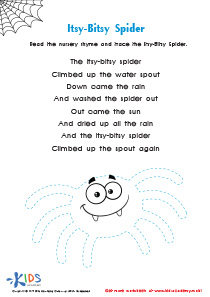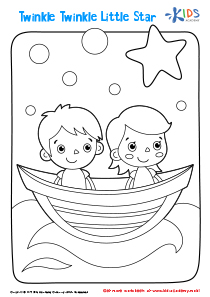Twinkle Little Star Worksheets for Ages 4-9
4 filtered results
-
From - To
Discover the enchanting world of "Twinkle Little Star Worksheets" designed for children aged 4-9! Perfect for nurturing early reading and writing skills, these worksheets engage young learners with fun activities inspired by the beloved nursery rhyme. From tracing letters and completing the rhyme to coloring and matching games, each worksheet is tailored to promote cognitive development and creativity. Ideal for use at home or in the classroom, these resources encourage a love for learning through play. Brighten your child's educational journey with our delightful Twinkle Little Star Worksheets, making learning as magical as the night sky! Explore today!
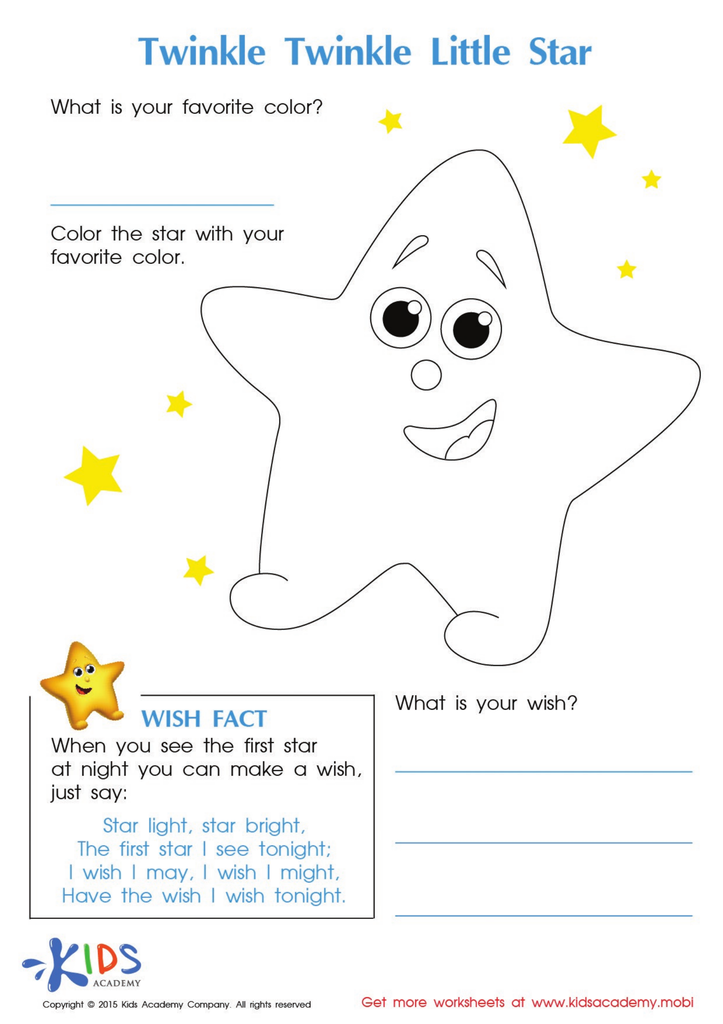

Twinkle Little Star Coloring Worksheet
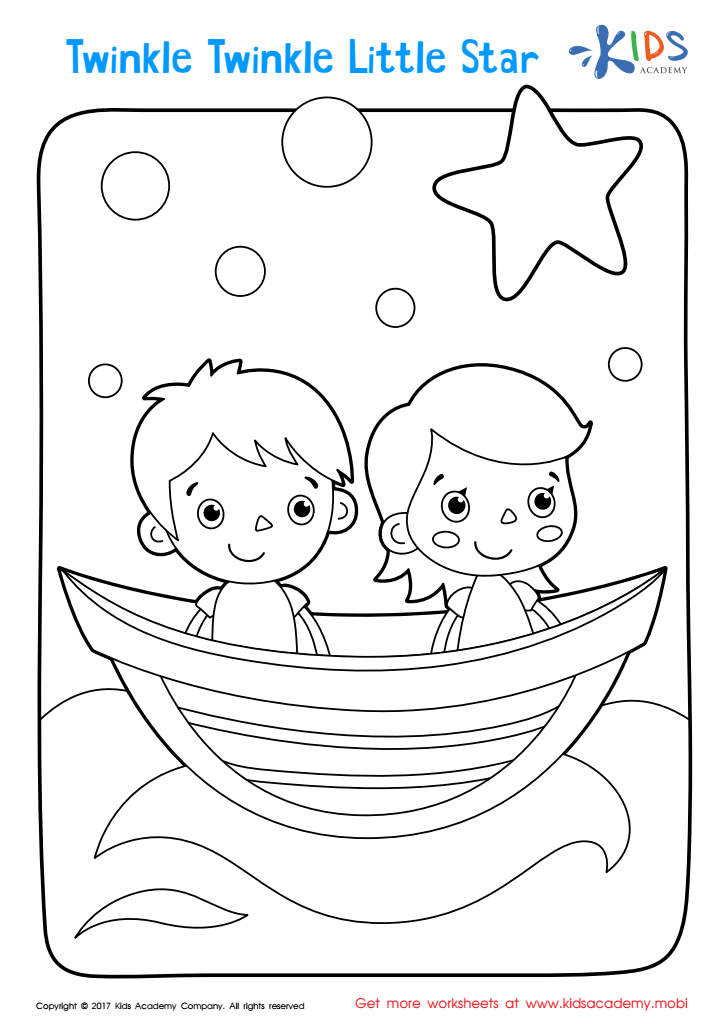

Twinkle Twinkle Little Star Coloring Page
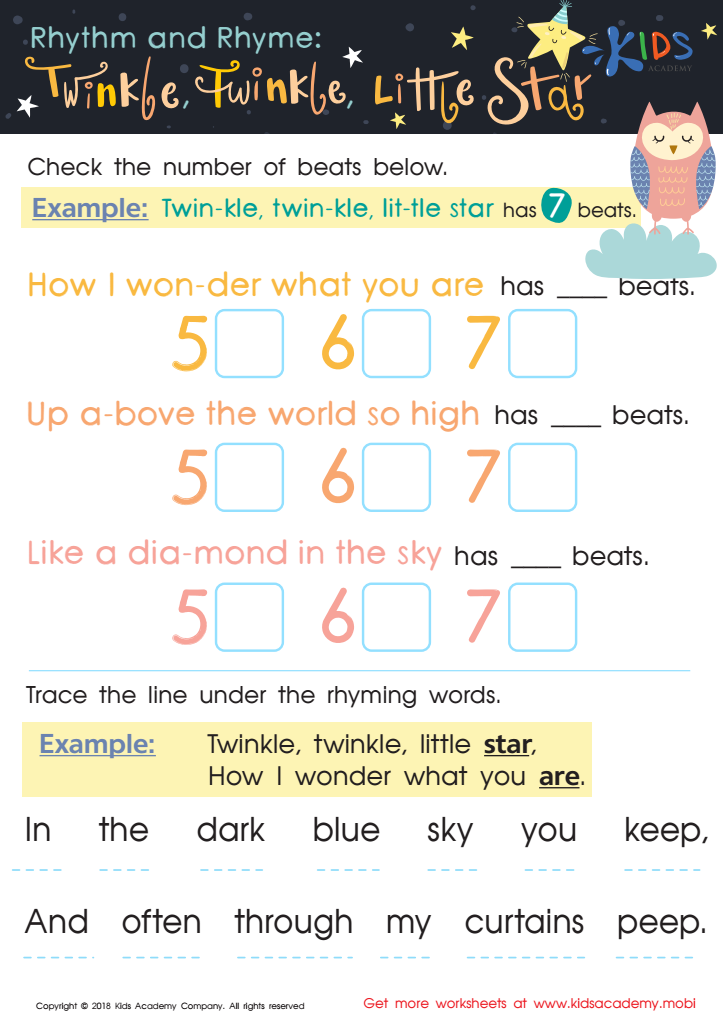

Rhythm and Rhyme: Twinkle, Twinkle, Little Star Worksheet
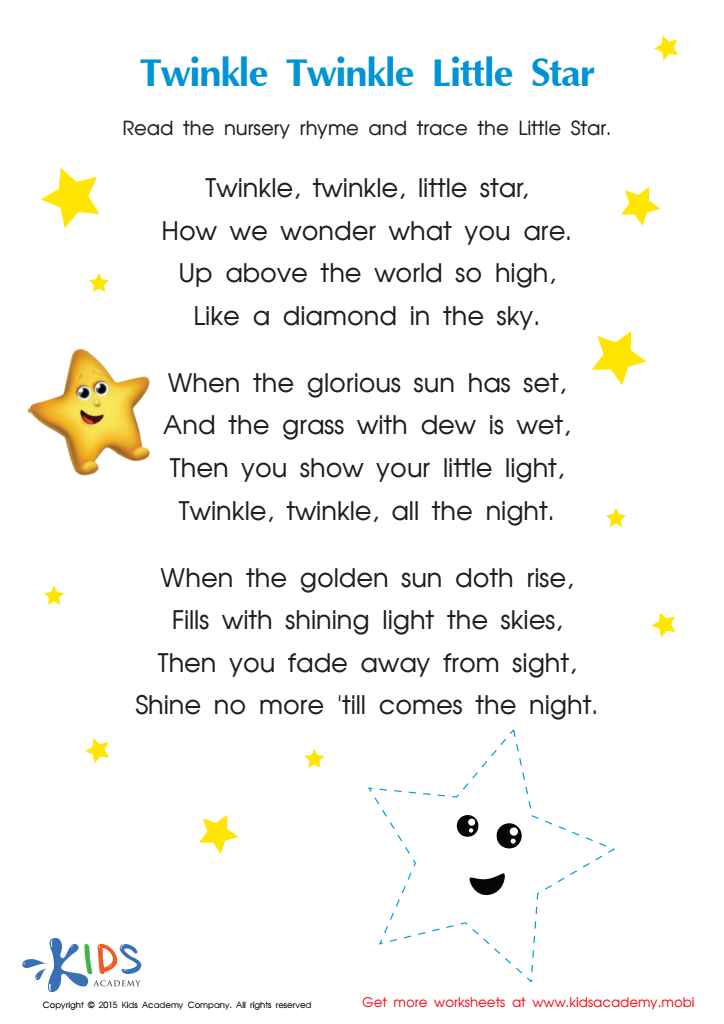

Nursery Rhymes: Twinkle Little Star Worksheet
"Twinkle, Twinkle, Little Star" is more than just a charming nursery rhyme; it offers invaluable benefits for children aged 4-9. Parents and teachers should care about this timeless song for several reasons.
Firstly, it fosters early literacy skills. The repetitive, melodic structure helps with language development and pronunciation, making it easier for young children to pick up new vocabulary. Singing this rhyme also promotes memory retention, which is crucial at this developmental stage.
Secondly, the song invites children to engage with fundamental concepts like stars, light, and nature, sparking curiosity and imaginative thinking. It introduces them to basic science ideas in a playful context, nurturing their desire to learn about the world.
Moreover, engaging in music, like singing "Twinkle, Twinkle, Little Star," strengthens social and emotional skills. Group singing encourages cooperation and reinforces a sense of community. It also helps children learn to express their feelings and enhances their emotional bonding with caregivers and peers.
Lastly, the calming melody provides comfort and can be used during bedtime routines, helping children wind down. Overall, prioritizing this classic rhyme can lead to a well-rounded, nurturing learning experience for young children.
 Assign to My Students
Assign to My Students


